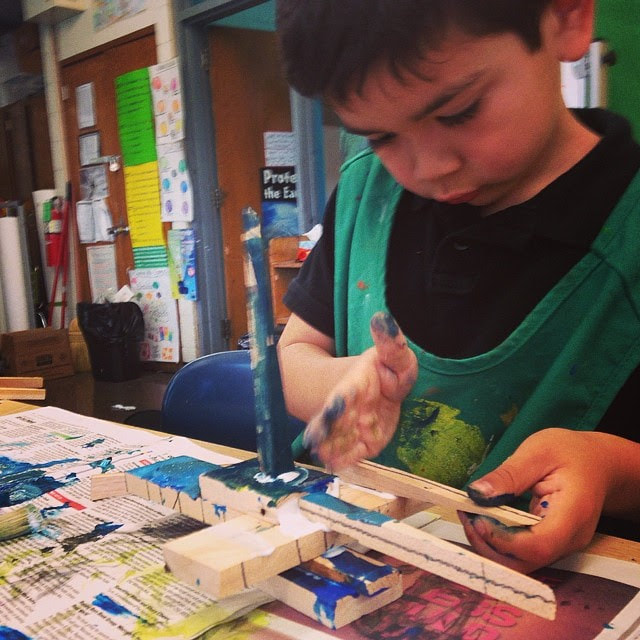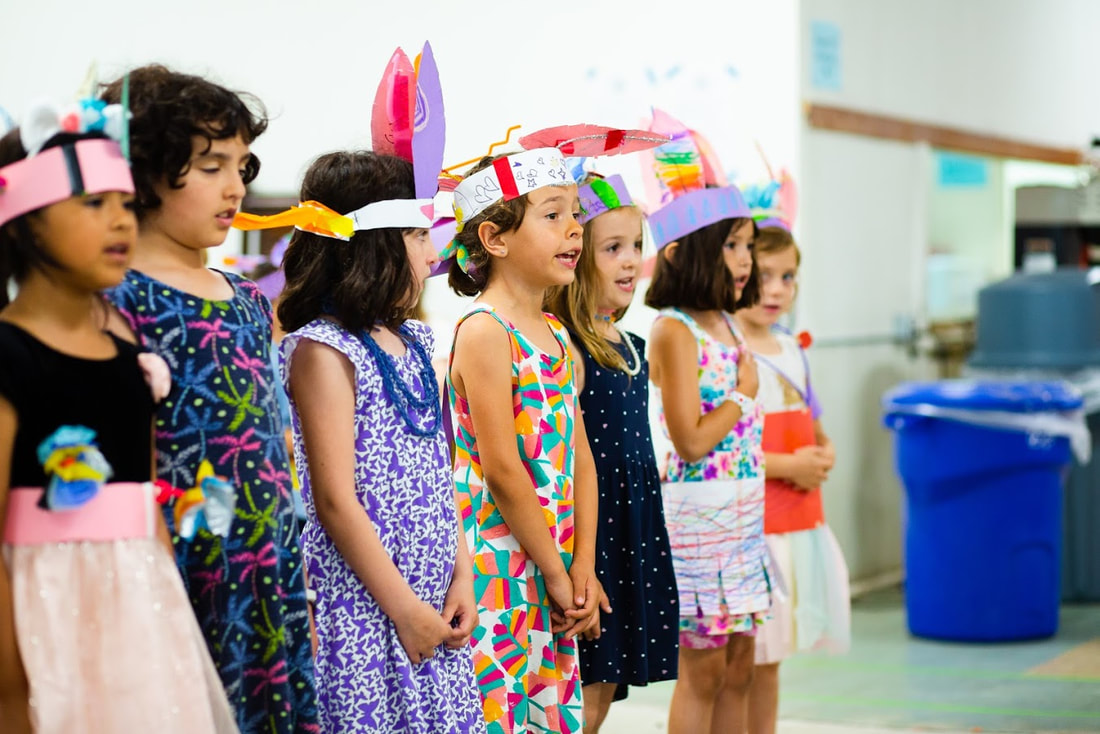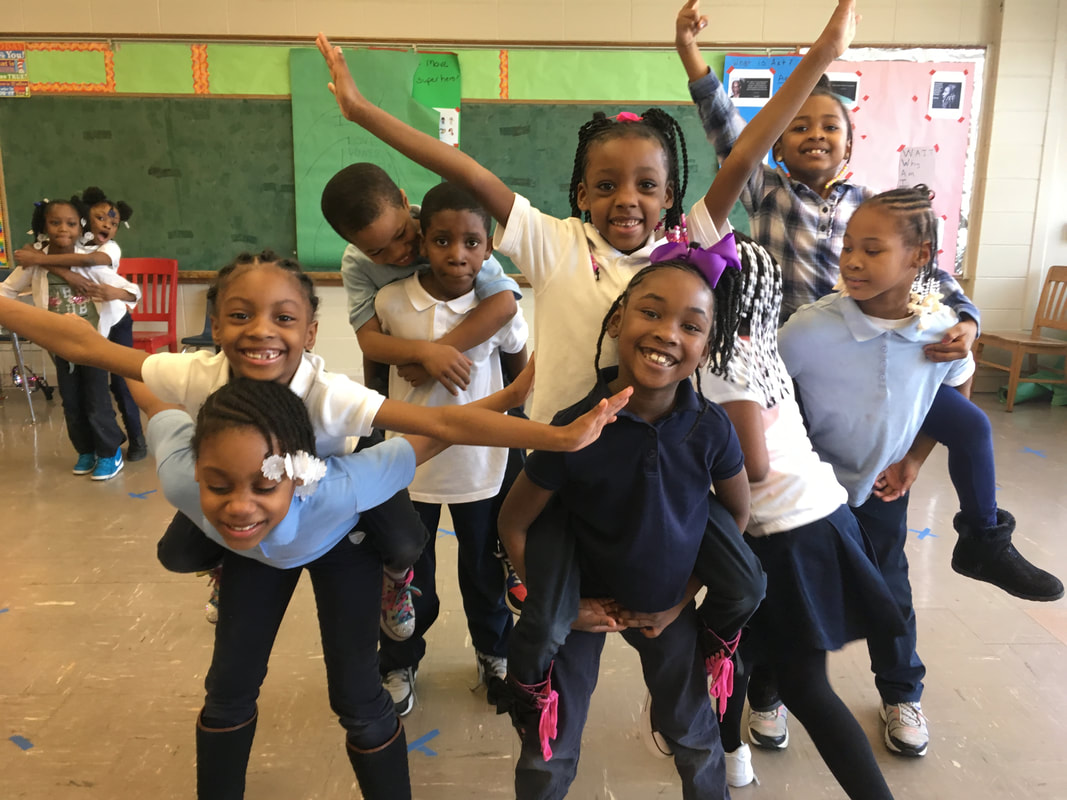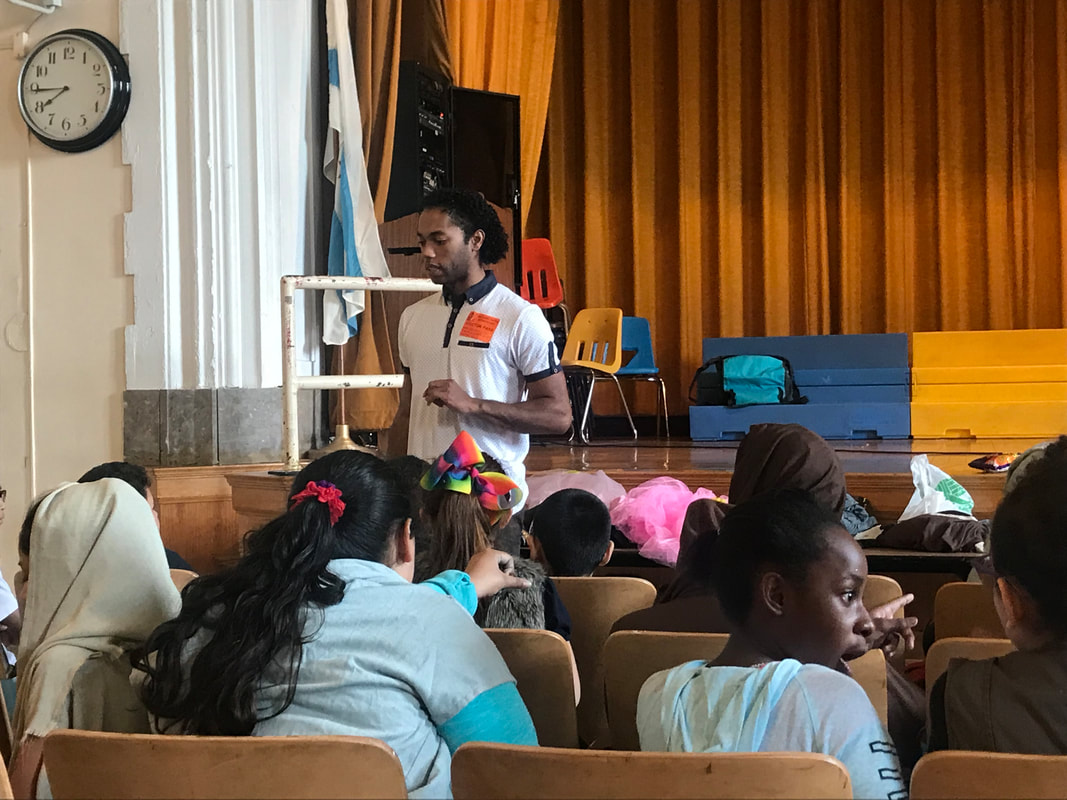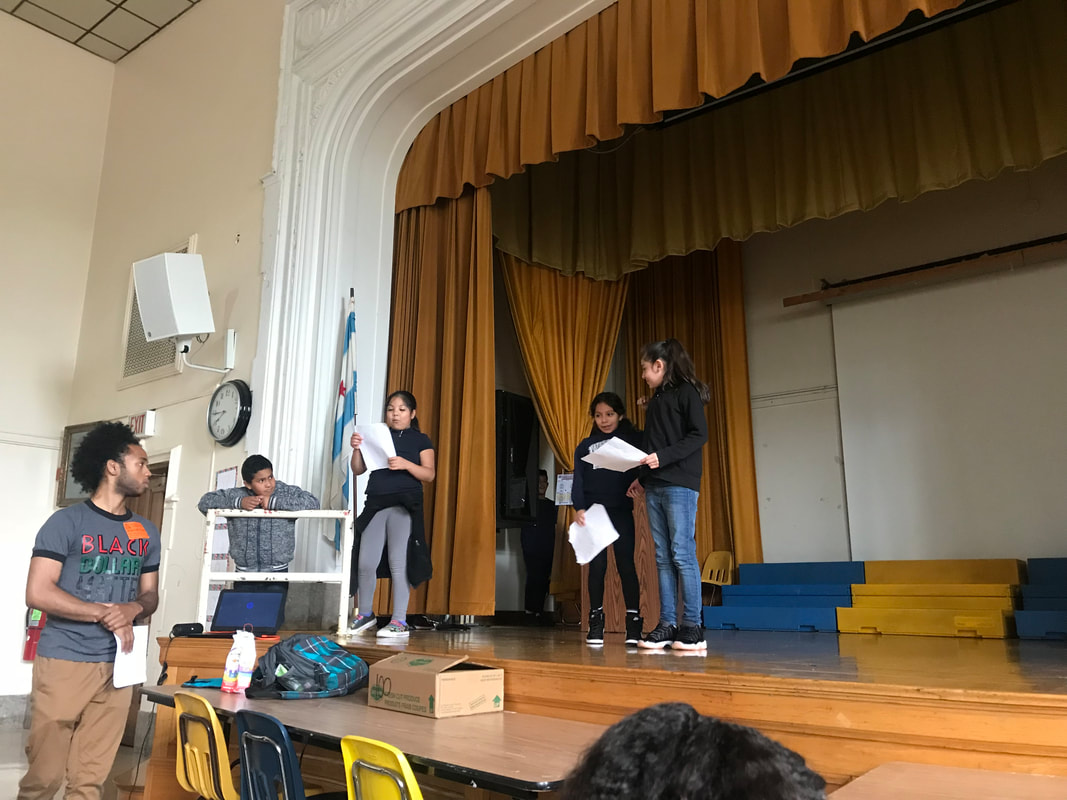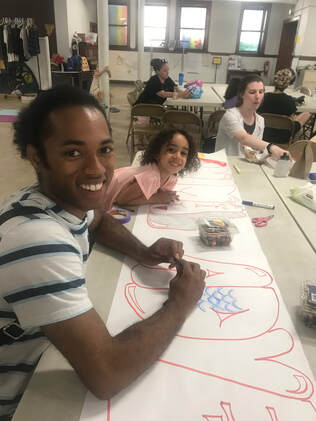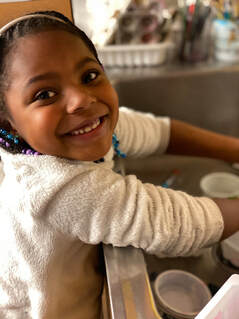 For 10 years, I have wondered what happened to Alexis. I have wondered what has happened to Jaylanie, Jeremiah, Heaven, and the countless number of kids, whose names I don’t remember, but are in the photos that archive our history. For 10 years, I have wondered what happened to the mother who in broken English told me how happy she was that her child was safe in the programs we offered at her school. For 10 years, I wonder what happened to the little boy who was crying on the last day of school because he only had one WWF wrestling figurine, and his friend who had the other one, was going to another school. They were no longer able to play together. As we wrap up our 20th-anniversary celebrations, it's crucial to acknowledge the 10-year milestone of the largest school closure in history, which took place in Chicago. CDE taught at six of the schools since our founding. We found a home at Von Humboldt and Ana Roque De Duprey Elementary Schools. It was a big building with two schools inside of it. While the schools had their issues it was also filled with hope and change. It was filled with dedicated teachers and staff who worked countless hours not only giving the students academic support but much-needed social-emotional support. Throughout my experience, I have discovered that integrating social justice principles into programming not only entails educating children about influential artists and activist leaders but also providing them with the means to amplify their own voices. Additionally, it is crucial to establish a secure and supportive atmosphere that enables children to have the freedom to be themselves. It was about teaching Alexis who was five how to finger paint for the first time. it was about teaching Heaven the difference between focus time and time to be silly. It was about listening to 12-year-old Denise talking about how she didn’t like to walk home because the men in her neighborhood looked at her funny. For you see, when these kids walked out of our doors, they walked into adulthood. They had to become tough just to survive. The neighborhood schools were systematically disinvested in while charter schools, just blocks away opened up fresh and shiny. CPS said the schools were closing due to poor performance but we know now from books like Ghosts In The Schoolyard by Eve L. Ewing and reporting from WBEZ that wasn’t the case. They closed the schools citing budget limitations, building underutilization, and concerns about academic performance. What the students heard was they were not smart. The teachers heard they were not doing their job teaching. What we heard was that we were failures. For 10 years, most of these buildings have remained closed. Our office is across from Trumbull School closed for poor student testing, not acknowledging that most of the students had IEP’s and were special needs students. It was reopened as Waldorf School in 2018. The “architecture of memory” is a phrase I use when a building, a place, or even an intersection of two streets fills you with memories of a moment in your life’s timeline. As I walk past the deserted playgrounds and school buildings, my thoughts drift toward the children and families we once worked with. I reminisce about the happiness they experienced, but also the sorrow they endured due to the school closures. I believe schools should be the beacon of the community. Schools should be placed not only for academics but community resources. I spoke at the school board hearings and to me, it was a “dog and pony show.” The school board knew what they were going to do, they just needed to make it seem like it was fair. Currently, CPS is facing low enrollment and another budget crisis as pandemic relief money is running out. Are we facing another round of school closings? The current administration is hoping to fill the schools with community resources but they say it’s not profitable. But what costs more? If the last 10 years have shown us anything is that when we disinvest in neighborhood schools, we disinvest in neighborhoods. So invest! Invest in mental health. Invest in wellness and community building. Without it, we will have more empty schools, more people dying from gun violence, and more families and communities asking for help on deaf ears. CDE will continue to do our part in building commUNITY through the arts, one voice, one story, one person at a time. Thank you for reading this and please enjoy the photos and videos of our students. Ellyzabeth Adler Executive Director and Founder
108 Comments
They came into their homes destroying things. Nowhere to go
They told them that they were going to die, just because they were different from other people. Sitting inside looking at people dying People pleading for their lives, people running and screaming The children crying, their parents dying The sound of sorrow will be there tomorrow The wall between torture and sorrow the last drop of tears for those chosen to die. They took us away, they didn’t listen. They murdered our children, they didn’t listen, The wall between torture and sorrow the last drop of tears for those chosen to die. Answers don’t’ come from blood or bodies dead in the mud Earth is a place with such despair There is destruction everywhere It needs to change so speak up now Speak up, I don’t want die Why should I help you? I want to live to be someone If we don’t’ speak who will? Everything will come to an end When people speak up for each other, they save lives or suffer the consequences. Dead silence is your enemy I was loud in silence Images flow through my head I cannot believe so many people are dead but you could still hear their laughter Should we speak up? Just look in your heart, it’s not that hard Will I get killed if I speak up? Just look in your heart, it’s not that hard Dead silence is your enemy I hope I’ll be remembered It’s time to say goodbye to those who died. an unforgettable genocide it’s time to say goodbye to genocide. Don’t let this happen again Speak up Even if you are the only one Speak up Don’t be a prisoner of silence Speak up It’s time, It’s time, It’s time it’s time to say goodbye to genocide Chicago Danztheatre Ensemble believes every child should have access to and receive a quality arts program, regardless of their background. Since our founding in 2001 we have provided an arts education program, and since 2008 we have been a Chicago Public Schools qualified vendor. Our program focuses on schools that
Providing this curriculum is particularly critical, as children transition back to in-person school over the next few months. While the full impact is yet to be known, studies are predicting that, as a result of the global pandemic, school-age children will be between six to nine months behind in reaching critical milestones. Not only are children experiencing academic setbacks, but they are also unable to engage in activities that promote social/emotional development. As the NEA report notes, the arts give children the ability to handle stressors, the degree to which they are experiencing today has not been seen in 100 years. This is particularly critical in our under-resourced communities, hardest hid by the COVID-19 pandemic. To ensure that all children have access to a comprehensive arts education from PreK through 1st grade, and one that provides social/emotional develoment, Chicago Danztheatre Ensemble is creating a precise, week-by-week program customized for each age group we serve, made possible through a grant from Innovation 80, received in January 2021. In addition to creating a program specific to this age group, CDE will also be standardizing our program so that all teaching artists can teach dance, visual art, theatre, and music. Working from the Illinois state standards for arts education, CDE will create a “one stop shop” program that bridges all art forms in either a 10-week, 20-week, or school year-long program and can be taught easily by teaching artists and replicated throughout Chicago. This curriculum will expose students to the arts early in their educational experience, teach them social/emotional learning skills, and promote reading and literacy. This 18-month project will involve creating model curricula, testing it with our current partner schools, and training our core teaching artists to then train additional teaching artists. Our goal is to roll out the “road-tested” model curriculum in Fall 2022, establishing early childhood residencies at five new schools, reaching 1,000 more students. We can make this expansion possible through government, private foundation, individual, and participant support. If you are an educator, or if you know a school that would benefit from this program, please reach out to us to start the conversation. Studies show that providing children with an arts curriculum during early childhood can have a profound positive impact on their future success. A 2011 National Endowment for the Arts report, The Arts and Human Development, noted several evidence-based studies that found, in comparison to control groups,
Arts education is crucial for students. 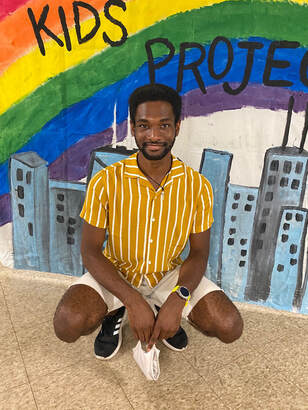 As we celebrate Black History Month this February, we must remember that in order to amplify Black voices, we cannot stop after February 28th. We must all constantly educate and participate in the sharing of Black stories. The dreams and visions of past leaders is only a blueprint of what we are able to achieve. It will take everyone, in and out of the classroom, day and night, 24 hours a day and 7 days a week, to be the change the world needs. For us at CDE it starts in the classroom, but it has to go beyond four walls. We are proud to be able to educate and to influence a new generation of leaders, teacher, physicians, creators and the brightest minds the world has to offer, but it can't stop with us. It was never meant to be a sprint, but when we look back and see all the work we have achieved, it will be all the sweeter. We are part of the team and so are you. Josh Xavier Miller Chicago Danztheatre Ensemble Teaching Artist 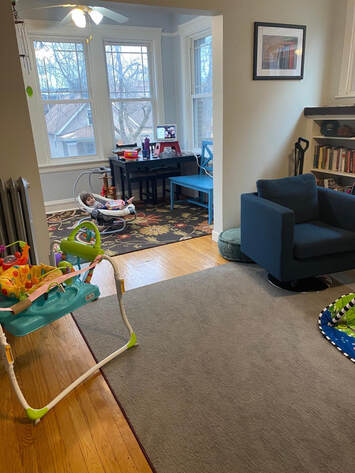 A behind the scene snapshot: Computer on the table but for the kids to see me fully, I have to back all the way up and try not to step on any toys! "Ms. Ellyzabeth, you're muted!"
Everyone over the last year has heard the phrase "You're muted!" Nowadays I judge how well my class went by three things: 1. How many times I unmuted myself before starting to talk. 2. If I got the camera angle right. 3. The kids' responses. CDE is currently teaching during the day at 3 schools, with 9 teaching artists on staff. Teaching looks very different for us currently. It's been a bit more challenging to adapt. For instance, we have to consider the space that both the students and us teachers are in. Finding the right camera angle when you are doing a stretch on the floor, teaching yoga and moving the camera up and down has become a dance in itself. I pop in daily for 15 minutes to a classroom, and it is a break from my administrative work to see the kids' faces and sing a song, dance a story and remember why, when the class is over, I'm doing the admin stuff. Over the next couple of weeks on our blog I will talk about what it's like from the teaching artists point of view. Take a moment to read about some of our funny stories as well as the challenges.  No two days are ever the same as a teaching artist. Some days I roll on the floor singing about animals with preschoolers, and some days I have real conversations about life and college with high schoolers. I might teach on the west side, north side, and south side in one day, eating meals in my car in between. I lesson plan in that car, in the kitchen, and from Dunkin Donuts locations citywide, keeping the choreography for over twenty dances in my head at any one time. But what rewards the constant movement, constant change, constant unpredictability of this lifestyle? The opportunity to build constant relationships with students over time-- to see them grow, create, and thrive. I’ve gotten just that chance this year by teaching at Daniel Webster Academy with CDE, where I’ve been with two classes every week for the full school year. In the fall, the kindergarten class did a fun matador-themed dance to paso doble music from Spain, learning to say “Ole!” and play imaginary castanets while marching to the beat. Their performance at the school’s Christmas assembly was a huge hit. This spring, we’ve been putting on our cowboy and cowgirl boots to dance to Mexican tribal guarachero music. All the while, we have explored the brain dance, a developmentally appropriate warm up that goes through natural patterns of body movement, and fun games exploring dance concepts like space, level, speed, and direction. The journey hasn’t been without bumps. The students face a number of challenges, emotional and interpersonal, and it can be hard for them to leave the outside world at the classroom door. But I absolutely live for the days when a normally unfocused student suddenly dances for the entire class, or the day a new activity I’m trying out strikes a chord and the whole room is full of positive, creative energy. Last week, I tried out some new classroom management tactics with striking results, and my assistant teacher and I left class feeling happy and accomplished. We’ll keep building our creative community, riding the ups and downs, playing with ideas and with each other, dancing on until summer. Susanna Hostetter holds a B.A. in Anthropology and Dance from Macalester College in St. Paul, MN, where she was awarded the David Wick Prize for Choreography. Susanna has trained in modern, jazz, and Latin, and studied West African dance forms in Tamale, Ghana. She has led both semester-long residencies and short workshops in over three dozen Chicago Public Schools over the last five years through Chicago's finest dance education organizations. In addition to her work with students as a Teaching Artist, Susanna is a PomSquad Fitness instructor and member of Desueño Dance Company. It is her joy to spread a love for movement within the city! 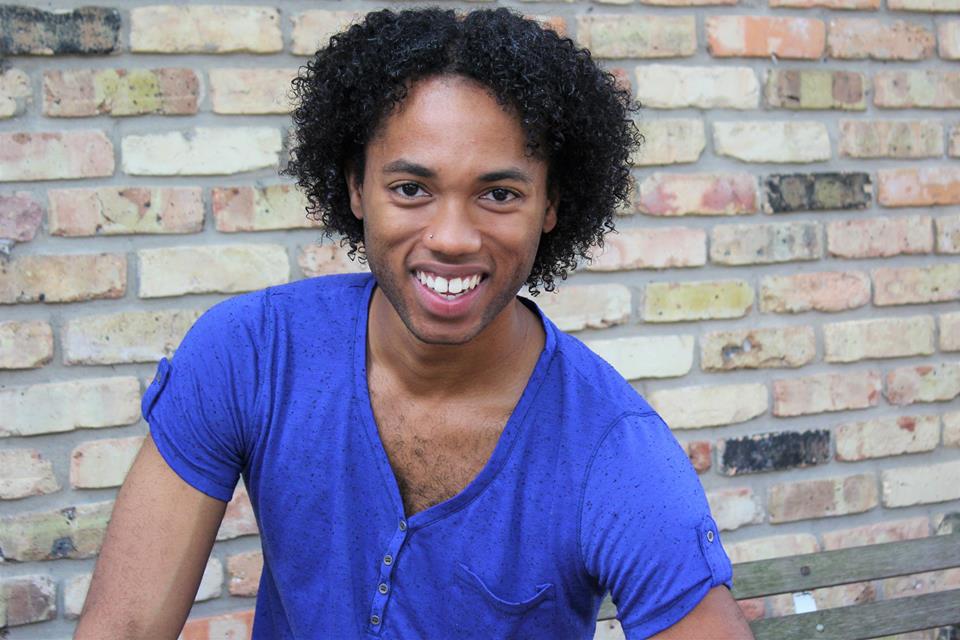 I am a Black person. I teach mostly Black and Brown kids. I enjoy teaching in schools where the kids look like me and where the kids can see that I look like them. It’s always been my goal to help do what I can for Black and Brown communities. I don’t want to create dancers out of all of these kids because I know that dancing is not what they all want to do as a career. However, I do want to create people who can work together. I want to create people who know how to communicate, create and build together. I’m fully aware of how many people outside of Black and Brown communities view these kids. They think they’re trouble-makers. They think they are violent. They think they are hopeless. I know this. This isn’t new to me. However, what I wasn’t expecting was hearing these type of negative things from my own students. One of my students said that Black kids are harder to teach than white kids. I brought that idea to another one of my classes and some of them agreed. They went on to say how white kids are more well behaved and organized. They said if the class was all white kids, they’d all listen and it’d be a completely different class. I was in complete shock. They really thought that the color of their skin determined their control of their body and mind. How do you respond to that? How do I, as a POC, look these kids in the eye and go about reversing this toxic mindset? It was absolutely heartbreaking but it did give me insight and clarity on why most of these kids acted the way they do. How can you fix your behavior if you believe because of the color of your skin that there’s no way to fix it? Why work hard to change what seems inevitable? It’s such a frustrating thing because of the way they think and the way they translate everything. Let’s not get confused, they are a rowdy bunch. They can’t keep still for more than a few seconds, they constantly talk and get bored real quick. They talk back, get attitudes and have to be told several times to do something before they listen. But they’re kids. What kids don’t act like that? So obviously, I have to be stern. I discipline them. I make sure I follow through on any consequences I say they’re going to have. For me, this is instilling good things in them, such as accountability and responsibility. For them, it’s Mr. Ben being mean or having an attitude or picking on me. On several occasions, I’ve tried explaining that I do what I do because I want them to succeed. I want to prove everyone wrong because these are good kids, great kids. When they trust you, they are so loyal to you and well-behaved. When you compliment them or tell them they had a good day, their faces beam. When they come together, do a dance or play a game, I see how happy and carefree they are, nothing makes me happier. These moments seem all too rare and far between. It’s tough and there are days I just want to give up. There are days I do give up and just have to stop class a few minutes early. These are my thoughts as a Black person teaching Black and Brown kids who look like me. They trust someone like me the most and it’s still a struggle, which gets me wondering “how do we break down these barriers when we look different than the kids we teach?” How do we go about breaking down stereotypes and mindsets that society puts on us and that we, in turn, put on ourselves? I genuinely wish I knew the answer but I’m grateful for that experience. I’m grateful that the kids felt comfortable enough with me to open up and share that information with me so I can figure out where to go from there. I have to find a way to allow them to see themselves as good, valuable and capable of change. I need to help them understand that the only thing limiting them is themselves, not their pigmentation. We all have control of our bodies, our minds and once we realize that, only then can we change ourselves and work together to progress collectively. Mr. Ben is a Teaching Artist with Chicago Danztheatre Ensemble. Mr. Ben in action at Yates School and CDE's Kids Project Summer Camp
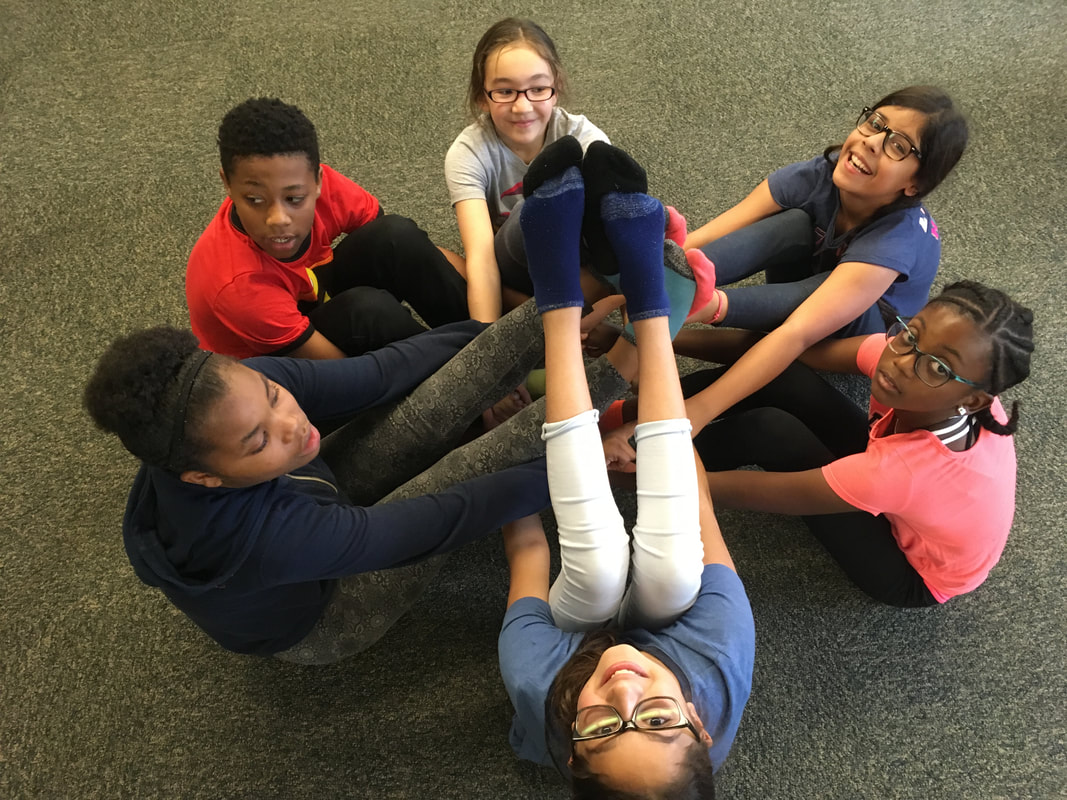 Recently in a dance of 5/6th graders, a paraprofessional told me that the only thing his student has done all morning was participate in my dance class. Talking to him more about the child, I found out that he has a hard time focusing and that when he is in dance, he's a completely different kid. We talked about the strategies that I use in my classes, like learning to find stillness through deep breathing and movement exercises that would be good for him to use before the student has to focus in his other classes. This is what CDE means when we say we teach beyond the dance steps and the lines in the play. It's about reaching and teaching each child for their specific needs. The shy child might only be able to say one line or stand on stage without being nervous. For bilingual students, we translate scripts so that everyone can understand. In dance classes, we show videos to breakdown stereotypes teaching that dance is for all regardless of gender, body type and physical abilities. We teach the whole child. We believe in process over product. We believe in investing more time in the classroom and establishing relationships with schools and community centers so that over the years to come, we can see the development in a child's learning. Ellyzabeth Adler Executive Director and Founder What is Cross Lateral Movement & Why is important?A cross-lateral movement is any motion that requires coordinating movement on both sides of the body. When the movement crosses from one side of the body to the other, it is called crossing the midline. The left side of the brain controls the right side of the body, and vice versa, so moving the left hand to touch the right side of the body activates both sides of the brain. Some movements, such as marching, are cross-lateral movements that require brain-and-body coordination even though they do not cross the midline. Eric Jensen, author of "Brain-Based Learning: The New Paradigm of Teaching," recommends that students get up and move every 20 minutes. Teaching Miss Mary MackAbove is a video of first graders who learned this complicated yet fun movement pattern to "Miss Mary Mack." I love teaching this exercise to the kids as an assessment of their learning and to see who might have difficulty with more complicated steps like a skip or marching to the beat. Children who lack cross lateral movement often have difficulty with speech, focus, memory and overall body awareness just to name a few. Over the weeks of teaching this, along with other of Chicago Danztheatre Ensemble's "Songs and Stretches" and the "Spelling Dance Warm-up," students become stronger connecting their body with their brain.
The kids have fun. It's a challenge. We normally do it two to three times in a warm up playing around with various ways: fast, slow, with a silly voice or my favorite, like an opera singer! Try it with your students or at home with your kids have a little fun! Further recommended reading about the importance of cross lateral movement is at http://www.ascd.org/publications/books/104013/chapters/Movement-and-Learning.aspx #missmarymack #kidssongs #chicagopublicschools #artseducation |
AuthorWritten by the Executive Director, Ellyzabeth Adler, Artistic Director, Sara Maslanka and our many teaching artists Archives
June 2023
|

